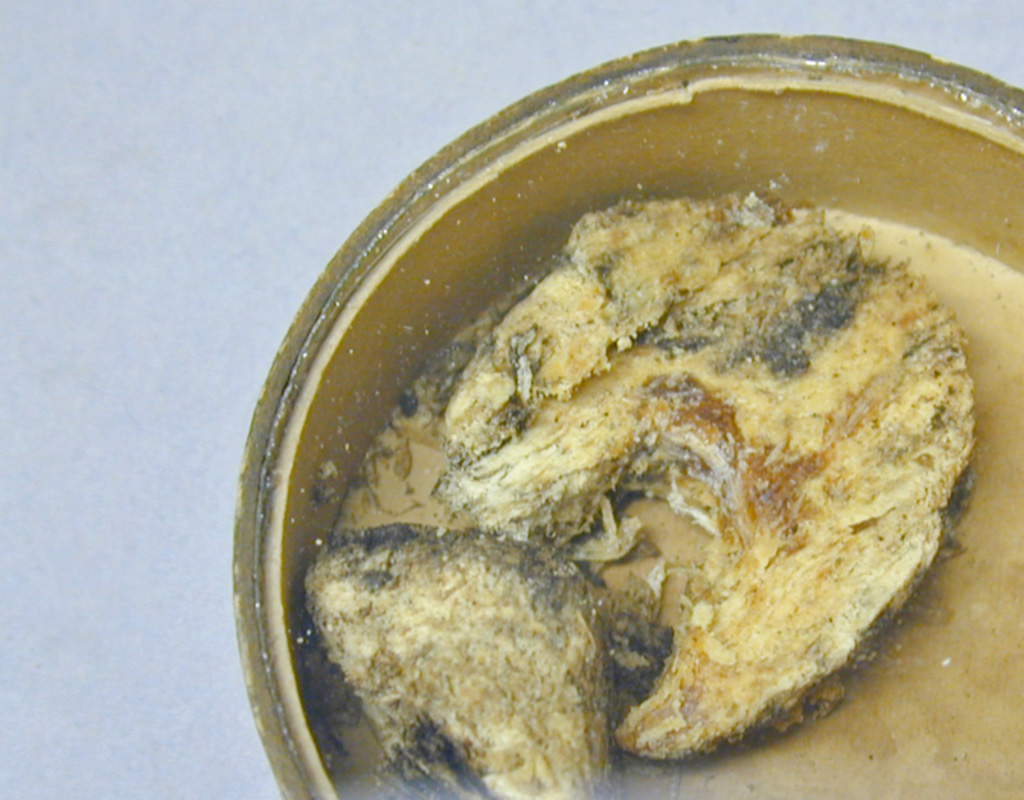Ambergris
Oceania
 Donated by Henry Balfour in 1931; 1931.58.2Ambergris is a waxy substance which, when exposed to air, turns a marbled, ashy colour and gradually blackens with age. It forms as an unnatural growth in the intestines of the sperm-whale, probably resulting from irritation caused by indigestible food, such as the horny mandibles and jaws of cuttlefish and squid. Although it is often expelled naturally and found floating in tropical seas, it can sometimes kill the whale and is found in their carcasses.
Donated by Henry Balfour in 1931; 1931.58.2Ambergris is a waxy substance which, when exposed to air, turns a marbled, ashy colour and gradually blackens with age. It forms as an unnatural growth in the intestines of the sperm-whale, probably resulting from irritation caused by indigestible food, such as the horny mandibles and jaws of cuttlefish and squid. Although it is often expelled naturally and found floating in tropical seas, it can sometimes kill the whale and is found in their carcasses.
Ambergris has a sweet, musky odour and was first introduced into medicine, cookery, and perfume by the Arabs, who called it canbar. The French called it amber gris ('grey amber') to distinguish if from resinous yellow amber which was also thought, mistakenly, to originate from the sea. In medieval medicine it was mixed with gypsum, wax, and labdanum to balance the humours of the body as a love potion, to cure epilepsy or migraine, and to repel pestilence such as the Black Death. According to one 16th-century Spanish physician, it was twice as valuable as gold. It was also used in China and India where it was known as 'Dragon's Spittle' and the 'Treasure of the Sea', respectively.
For centuries men speculated where ambergris came from. Various sources identified it as a fungus, mineral, tree root, dried sea foam, or bird-dung. In Arabian Nights, Sinbad tells of how he was shipwrecked on an island and discovered a spring of ambergris which flowed like gum to the sea. Today, despite legal restrictions governing its harvesting, it is still used in Egypt to scent cigarettes, in the East to flavour wine and tea, and around the world as a valuable tincture in fine perfumes.
